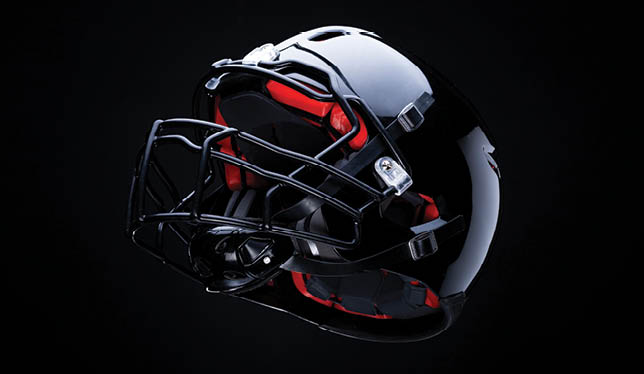A new football helmet may be making its way into the National Football League (NFL) – thanks in part to two mechanical engineering professors at École de technologie supérieure (ÉTS). This new piece of equipment, named The Gladiator, was designed by Kollide, a Montreal-based four-company consortium. The helmet was the biggest winner of the NFL Helmet Challenge in 2021, receiving US$550,000 in funding. It is currently undergoing testing in the league.
The NFL created the challenge in 2019 to address the issue of brain injuries in sports. Its goal: invest in innovations shown by laboratory testing to outperform existing helmets in preventing concussions and reducing their severity.
To tackle this complex challenge, Kollide brought together leading experts from four specialized fields. Consortium member Kupol invited the two researchers – Éric Wagnac and Yvan Petit, who have been collaborating since 2012 – into the fold. “Although our expertise is in hockey helmets, we already had partners in this field,” said Dr. Petit, noting that their role was focused on researching, characterizing and evaluating materials and structures for the helmet design.

“In reality, our success on the NFL project was thanks to the engineering expertise and systematic design and optimization methodology we’d previously developed for hockey helmets. This was a considerable advantage even if our design strategies, materials and structures had to be adapted for the unique impact scenarios and game conditions in American football,” Dr. Petit added.
For the project, the ÉTS professors custom-designed a laboratory to meet the NFL’s material and helmet testing requirements. This made it possible to audit emerging technology and collect crucial data for making continuous improvements to the helmet. Expert users, including players from the Université de Montréal Carabins, were then recruited to evaluate characteristics like comfort, fit and the overall perception of the prototype.
One aspect players noticed in the trials – the helmet’s light weight – is at the heart of the consortium’s technology. “We dared to pare its weight down to the minimum – it’s about three times lighter than traditional football helmets. This improved its acceptability and effectiveness. And while we don’t claim to be the best, we were in the top three in terms of protecting players and reducing the risk of injury. Combining those two characteristics resulted in a lighter and better performing helmet, which allowed us to stand out,” said Dr. Wagnac.
This success is due in no small part to the technology developed and integrated into the helmet. “It’s based on structures of three-dimensional cells made with specific geometries and materials. Instead of conventional methods, additive manufacturing was used. This approach allows us to optimize performance. Unlike the uniform structure of conventional foam, we can use different structures in our helmet to improve protection based on impact location and conditions,” Dr. Wagnac added.
Not content to run out the clock as they await the NFL’s testing results, the researchers are already exploring the technology’s safety applications for bicycle, motorcycle, snowmobile and electric scooter riders.